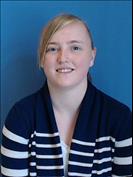Celebration of Scholars
Optimization of Tissue Clearing Methods to Image Optic Chiasm Development in Zebrafish
 Name:
Allison Dreyer
Name:
Allison Dreyer
Major: Neuroscience
Hometown: Schiller Park, IL
Faculty Sponsor: Steven Henle
Other Sponsors:
Type of research: Independent research
Funding: NIH
 Name:
Shelby Schwerdtfeger
Name:
Shelby Schwerdtfeger
Major: Neuroscience
Hometown: Wonder Lake, IL
Faculty Sponsor: Steven Henle
Other Sponsors:
Type of research: Independent research
Funding: NIH
Abstract
Visual information is relayed from the eye to the brain through axons of retinal ganglion cells (RGCs) that form the optic nerve. Damage to the optic nerve is irreplicable and leads to blindness in humans. However, upon complete transection of the optic nerve in zebrafish, RGCs can regrow their severed axons to re-innervate their targets in the brain, resulting in functional recovery 2–4 weeks after injury. Although the zebrafish is an excellent system to study development of RGC projections, optimal imaging of the optic chiasm is currently difficult. The optic chiasm, located deep within the zebrafish head, is formed by optic nerve crossing in the brain and is highly susceptible to developmental error. For analysis of optic chiasm development, Isl2b:GFP transgenic zebrafish embryos, with GFP-labeled RGCs, can be fixed at specific times throughout development and cleared using various methods to image deeper into tissue. FocusClear facilitates light penetration and allows visualization at least 500 µm below tissue surface. The overall aim of our research is to investigate proper clearing techniques to maximize imaging of the optic chiasm. We hypothesize that FocusClear treatment will allow for better imaging quality of the optic chiasm within developing zebrafish. Specifically, we want to vary times of FocusClear treatment to optimize its use. Determining optimal clearing techniques will allow further research of different drugs and genetic alterations on optic nerve development and regeneration.
Submit date: March 25, 2019, 12:13 p.m.
